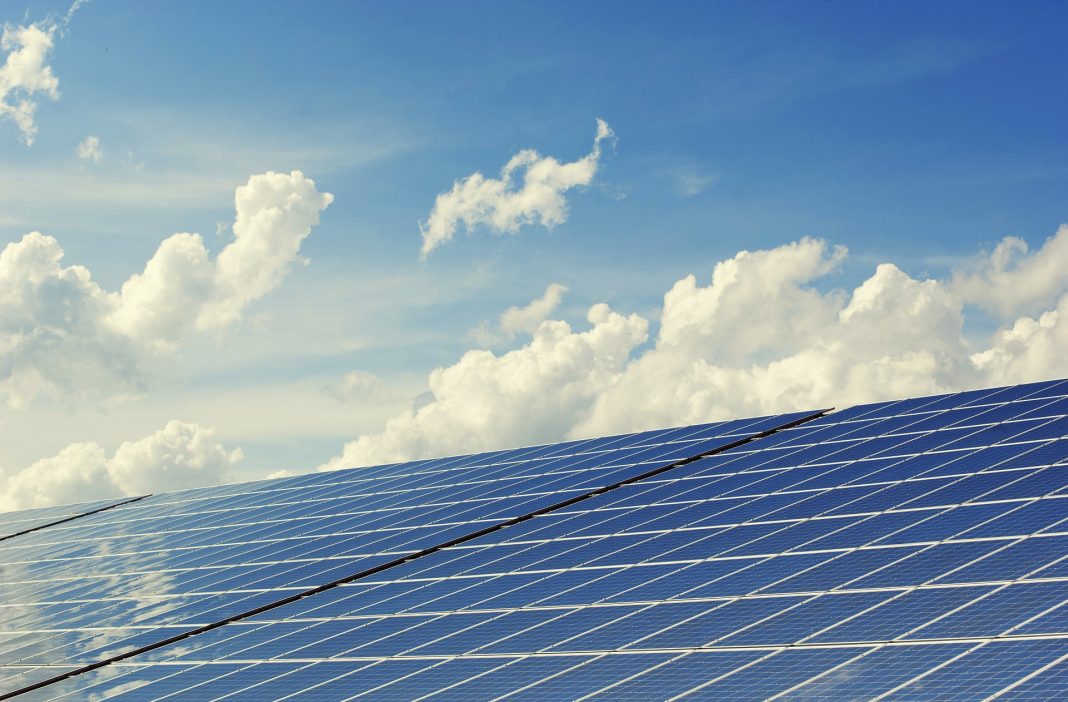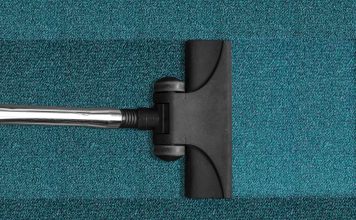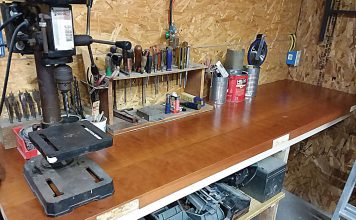| Issue #63 • May/June, 2000 |
Solar building design has been used since ancient times. In the more recent past, it has been more or less ignored as impractical, complicated, or too expensive. Incorporating the sun’s energy into the design of the built environment, however, is practical, simple, and affordable.
Ancient civilizations knew that orientation to the sun was an important factor in the layout of their cities and homes. As the knowledge and technology of using solar, wind, and water sources evolves, owner-builders and building professionals alike will have a greater opportunity to incorporate energy-conserving strategies into any project.
Introduction:
Following are four projects designed by the author that illustrate passive solar design strategies, introduce a new building-integrated photovoltaic roofing material, and show how integrating energy systems lowers overall cost. Examples include:
- An award-winning passive solar home on the northern California coast that offers all the comforts of modern living but uses only solar energy for heating and the prevailing wind for cooling.
- A five-story solar-heated tower house nestled in the redwoods with a roof-top, solar-heated hot tub.
- A barn roof with an integrated three kilowatt photovoltaic (PV) array that satisfies the energy needs of a single family home and loft apartment on a five-acre ridge-top homestead.
- A 2,000-square-foot house that combines the use of passive solar design with thermal collectors to satisfy heating needs and a roof-integrated PV system for electricity generation.
Caspar Point house
The 3,000-square-foot Caspar Point home is located in northern California on a rugged point of land jutting out into the Pacific. It incorporates southern exposure, sun spaces, thermal mass, insulating envelope, earth coupling, and thermosiphon solar-heated water for domestic hot water and radiant floors. The solar heating strategies have maintained comfortable indoor temperatures in an extremely harsh climate without the use of fuel since the home was completed in 1991.
 The Caspar Point house is unique in that it uses no fuel for space heating or cooling throughout the year. |
The indoor temperature has been maintained above 65 degrees Fahrenheit in this relatively cool location. Opening windows and ventilation tunnels protect the house from overheating. The electricity needs are about 1/10th that of a conventional home. This is accomplished by using energy efficient appliances and fixtures along with solar strategies. The $93 per-square-foot construction cost was $30 less per square foot compared to other custom homes in the area.
Orientation
Buildings incorporating passive solar design rely on the sun, wind, and the earth to maintain comfortable indoor temperatures. Proper orientation accounts for more than 80% of the success of passive solar design. The prevailing wind should be used for cooling and ventilation. Earth berms can protect the house from cold winds.
The Caspar Point house is built into the earth on the north and west sides to protect it from the prevailing wind. The berms also increase the depth of the house’s connection with the earth to take advantage of the more constant below-grade temperatures. Two stories of glazing open the house to the south for solar gain and a view of the ocean. The exposed greenhouse acts as a heater where tomatoes thrive through the year.
The sun enters the building through the greenhouse entry, a sunspace off of each bedroom, and large view windows in the main living spaces. Overhangs are sized to shade the windows in the summertime while letting the sun’s rays fully penetrate in the winter, ensuring maximum direct gain in thermal storage walls and concrete floors.
Thermal mass and insulating envelope
Thermal mass within a building regulates interior temperatures. The mass absorbs heat on sunny days and prevents overheating. At night, the stored heat is radiated into the building. The thermal mass at Caspar Point consists of 100 yards of structural concrete. The insulating envelope extends to below grade on exterior walls to integrate the foundation’s structural function with its ability to store heat. At Caspar the slab is insulated from the earth with R-11 insulation, the exterior walls are wrapped with R-19 insulation, and R-30 was used in the ceilings to create an insulating envelope.
Solar heating
Flat plate solar collectors mounted on south elevations can be used to provide solar heated liquid for space and domestic water heating. Two large flat plate collectors are integrated into the south-facing roof above the stairwell. The heated liquid thermosiphons into a tank. The heat stored in the tank is then pumped through pipes embedded in the slab floor to place the heat where it does the most good. A heat exchanger in the solar tank is used to provide domestic hot water.
 This tower house takes full advantage of winter sun. Shading keeps out the summer sun. Venting the hot air helps pull in cooler air. |
A tower house
The Sterling-Norris tower house, located four miles inland on a ridge just south of Albion, CA., responds to the redwoods that surround it by reaching for the sky. The passive solar design concepts used in the Caspar Point house are repeated but adapted to a different setting by orienting the building vertically. The sun is the only energy source necessary to heat the five-story tower in the winter. Overhangs prevent overheating by the high summer sun. The house works as a cooling tower when windows are opened by venting hot air out of a hatch on the roof deck. This pulls cool air into the lower floors.
Solar gain
The south side is open to the sun with an attached greenhouse on the lowest level and large windows that let in the winter sun but are shaded from the high summer sun. Photovoltaic (PV) panels are mounted above flat plate collectors on either side of the sun space/greenhouse to run pumps which distribute heated liquid through radiant floor pipes embedded in the floor slab. Heated air rises naturally through the house, controlled by the opening and closing of doors at various levels.
Flat plate collectors are also installed on the shed roof over the south-facing 4th and 5th floor windows. These roof-integrated panels heat water for domestic use and a hot tub built into the roof deck.
The first floor is buried to take advantage of the earth’s more constant temperature. The walls were wrapped with R-19 rigid insulation above and below grade, and R-11 insulation was used underneath the slab in order to prevent the heat stored in the thermal mass from escaping to the outside.
 Author replaces an old roof with dormers, PV modules, solar water-heating panels, and skylights. The finished roof is revealed in the opening photo of this article, and on the cover of this issue. |
Resource efficiency
The top soil excavated from the building site was spread on the surrounding gardens to enrich the soil. Runoff from the roof is collected in a reflecting pond immediately south of the house. The pond is used to irrigate terrace gardens further down the south slope.
The foundation was designed to form retaining walls instead of burying the required 50 yards of concrete underneath the house. As a result, the structural concrete serves the multiple functions of foundation, thermal mass, and earth connection. With the addition of a skylight, it further provides 300 square feet of comfortable living space at almost no extra cost.
The house was framed and trimmed with resawn, recycled redwood timbers salvaged from a local mill. The 2 x 6-foot T&G fir flooring used throughout the house is supported by exposed redwood beams and also serves as the ceiling of the floor below.
Like the Caspar Point house, energy efficient appliances and fixtures help lower the overall energy consumption. Full-spectrum capsule fluorescent lights are used, requiring one quarter of the energy of incandescent lightbulbs. Low-flow plumbing fixtures were installed to reduce water usage. Many of the Mendocino water towers this home imitates have survived over 100 years on less substantial foundations. This home should last at least as long.
Energy savings
The solar strategies added only minor costs to this custom home but resulted in substantial energy cost savings over the life of the building. The utility bill averages $20 per month which is about one-fifth that of the average 2,500-square-foot home. Free solar space heating and cooling and water heating account for over 50% of energy savings. Good insulation and efficient appliances further add to the energy savings. The construction cost was $84 per square foot which is 30% below the $125 per square foot which is typical for custom homes in the area.
A barn re-roofing
The replacement of a south-facing leaking metal roof with photovoltaic panels turned an old barn roof into a power generator for the author’s homestead located three miles inland from the Pacific Coast in Albion, CA. Using solar panels over the roof framing saves the cost of roofing and a mounting structure that would be necessary to support the panels. Skylights were also integrated into the new roof to provide daylighting, and a flat plate collector was added to supply domestic hot water to a barn loft apartment.
 A shed dormer transforms the loft apartment into a warm and sunny place. |
Power generation
The 700 square feet of thin-film amorphous laminated-glass panels produce a steady 3 kW for 7 to 8 hours in the summer and an average of 1.5 kW for 4 to 5 hours in the winter. This is enough energy to run all the appliances in the house and loft apartment year around, and charge an electric car and an electric tractor on sunny days. Thin-film amorphous silicon panels are 6-10% efficient in their conversion of sunlight to electricity, compared to 10-14% of crystalline panels. But amorphous panels have the advantage of performing well in high-temperature and shaded conditions. The roof, including the 4 kW synchronous Trace inverter and battery pack, cost $15,000 and will pay for itself in 10-15 years.
Embodied energy
The thin-film amorphous panels can recuperate the energy it took to manufacture them in six months of use as compared to up to 3-5 years for crystalline panels. Thin-film technology uses 300 times less silicon feedstock and produces virtually no waste compared with cutting crystalline cells. Embodied energy is also saved with a roof of multiple functions: shelter, power generation, water heating, and daylighting.
A PV roof house
The McMillan residence is a 2,000- square-foot, three-bedroom home that shows how solar strategies can be incorporated into a traditional design. The home is located three miles inland on a sunny plateau just south of the town of Mendocino, CA. The main glazing on the building is oriented south for solar gain. Flat plate collectors provide heated liquid for domestic hot water and radiant floors. An integrated PV roof makes electricity.
Solar gain
Arbors and overhangs protect the south facing glazing from the high summer sun while exposing the tile floors to the low winter sun.
Flat plate collectors are mounted on the south wall between windows and doors. By mounting these solar collectors vertically, twice as much heat is generated in the winter when it’s needed as in the summer when overheating can be a problem. The heated liquid is stored in solar tanks in the attic and circulated through hydronic heating pipes embedded in the floor slab. A coil of pipe located in the solar tank acts as a heat exchanger to provide domestic hot water.
 UniSolar modules form part of the roof of this 2,000- square-foot home. |
Integrated PV roofing
A 2-kW PV array bonded to architectural standing-seam metal roofing is the first of its kind on a single-family residence. The array, made by Uni-Solar of Troy, MI, was installed in three hours. This equals the time it would have taken to install regular standing-seam metal roofing. The flexible PV material is bonded to metal panels 16 inches wide and 18-20 feet long. Each panel requires only two electrical connections, easily accessible under the ridge cap. Each panel generates 128 watts of power. The installation involves just one roof penetration under the ridge cap. It channels the wires to a combiner box near the batteries and inverter. Here the 24Vdc power is inverted to 110Vac.
Cost savings
The PV roof costs $5.50 per watt which is approximately equal to the cost of a non roof-integrated PV panel in need of a mounting structure or tracker. Orienting the PV roof to the south is the only requirement for efficient operation. The value of energy production over the 50-year life expectancy of the roof more than justifies the initial cost which will be recuperated in 10-15 years of use.
 Plastic tubing embedded in concrete insulated from the ground makes for a warm floor in winter. |
Flat plate collectors used as siding not only avoid the cost of the siding they replace but also save the expense in material needed to build a supporting structure. They also add insulation to the wall. While it is relatively expensive to buy new flat plate collectors, the initial cost is quickly recuperated. When compared to electric water and space heating, the initial cost can be recovered in as little as three years. After that, hot water and warm floors are almost free.
Conclusion
In the past, solar components were regarded as unconventional and visually unpleasing additions to buildings. When solar components are integrated into the skin of a building, they eliminate the need for the material they replace and blend in with the structure. New solar materials can enhance the aesthetics of both traditional and contemporary structures while providing a clean and self-reliant energy supply.
These four projects show that the technologies available to gather and conserve energy do not add significantly to initial expense but do lower the long-term cost.















